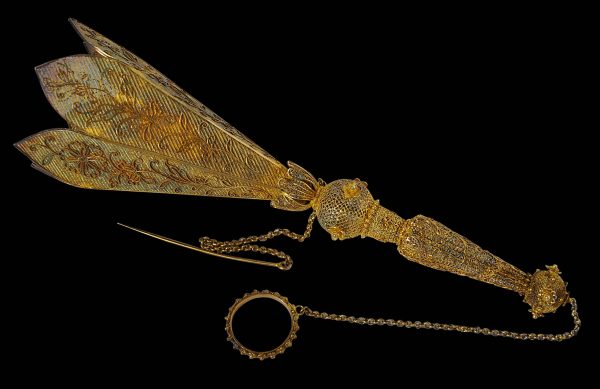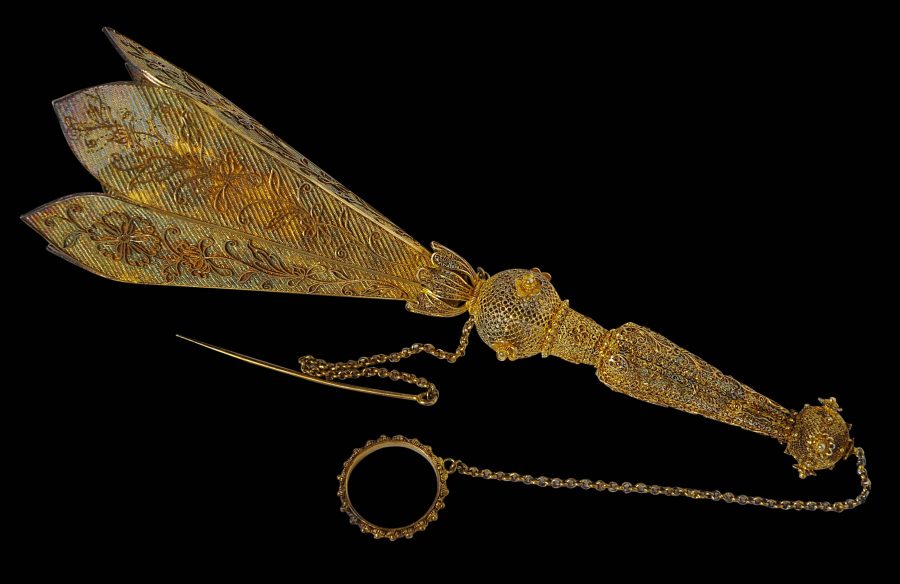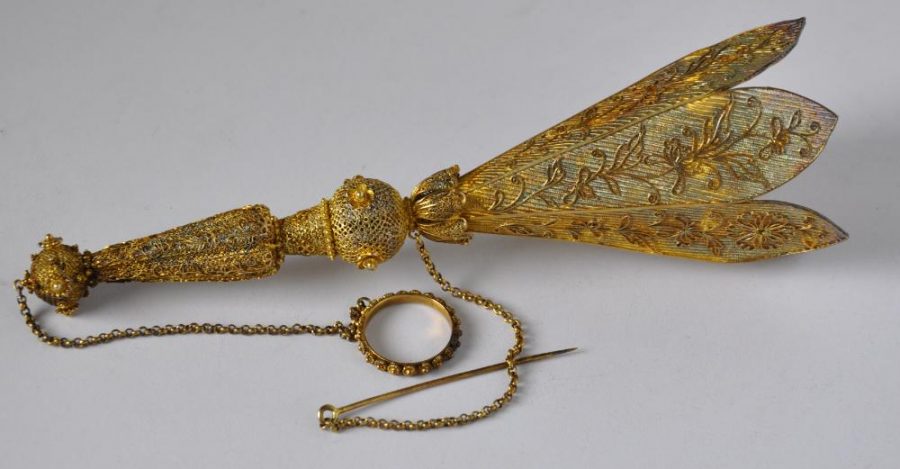This posy holder is unusual in that it is of 19th century Chinese manufacture but made for the European export market. It is of the finest silver filigree and has been entirely gilded or gold plates. It is remarkable for its pristine condition – there are no losses or repairs to the filigree and the gilding is still bright and intact. The cone section comprises six ‘petals’ or leaves, each of which comprises the finest filigree over which scrolling floral work has been overlaid in gilded flat wires.
The stem features a filigree sphere and handle, again, all in the finest filigree and decorated with floral spandrels.
Posy holders were fashionable in the 18th and first half of the nineteenth century in Europe. Ladies would appear in public with a small posy of flowers secured in such a holder. The pin, which is attached by chain to the holder slides through apertures in the sides of the cone of the holder to pin the flowers in place. The ring, which is decorated with small gilded filigree spandrels, would slip over a finger of the wearer.
Related Chinese export silver filigree examples are illustrated in Forbes et al (1975, p. 239), Piotrovsky (2006, p. 28), and Crossman (1991, p. 353).
The example here is in excellent condition.
References
Crossman, C.L, The Decorative Arts of the China Trade: Paintings, Furnishings and Exotic Curiosities, Antique Collectors’ Club, 1991.
Forbes, H.A.C. et al, Chinese Export Silver 1785-1885, Museum of the American China Trade, 1975.
Piotrovsky, M. et al, Silver: Wonders from the East – Filigree of the Tsars, Lund Humphries/Hermitage Amsterdam, 2006.




